Our Stained Glass
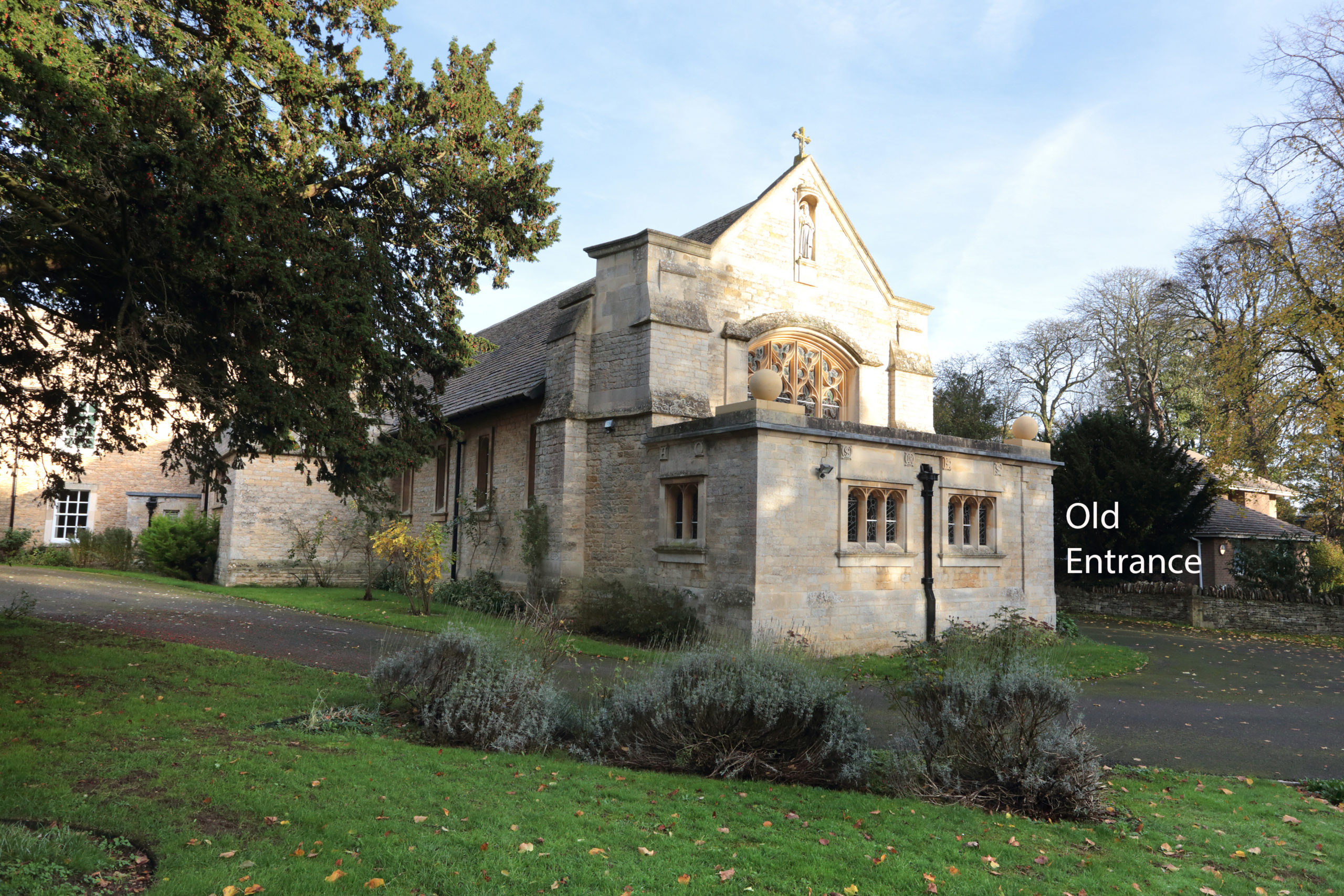
About our windows
Our dining hall at LVS Oxford retains the original stained-glass windows of the old St Philip’s Church (pictured). The church was built in 1899 as part of a Servite priory. The Servites, or the ‘Order of the Servants of Mary’, were one of the original monastic orders of the Catholic Church. Begbroke House, and the estate, had been donated to the Servites by a recent Catholic convert, John Robertson in 1897.
The windows generally tell the story of the Catholic church, and the Servites, in Britain. All but one, or possibly two, of the windows were designed by John Hardman & Co of Birmingham in 1899.
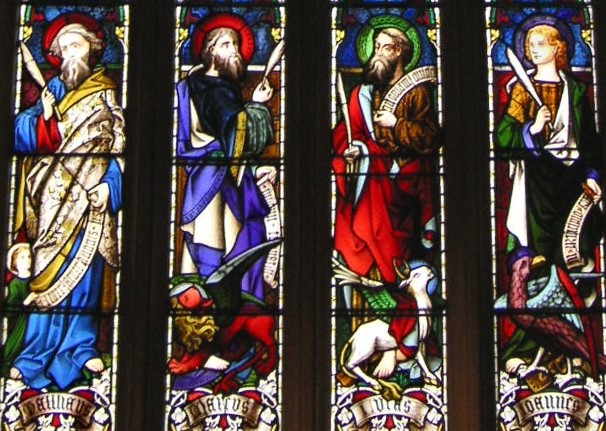
John Hardman & Co
Hardman and Co. were one of the leading stained-glass manufacturers of the Victorian age. They were proponents of the Victorian Gothic revival and involved in the renaissance of Catholic church building in the UK. Most famously they worked with A.W. Pugin on the stained glass for Houses of Parliament in London. They also worked worldwide. The picture shows one of their windows from Sydney Cathedral.
They ceased trading in 2008, but at the time they would have been the first choice for the new chapel. In 1899 Art Nouveau was the new style that had swept across Europe, but the chapel windows remained very definitely medieval Gothic.
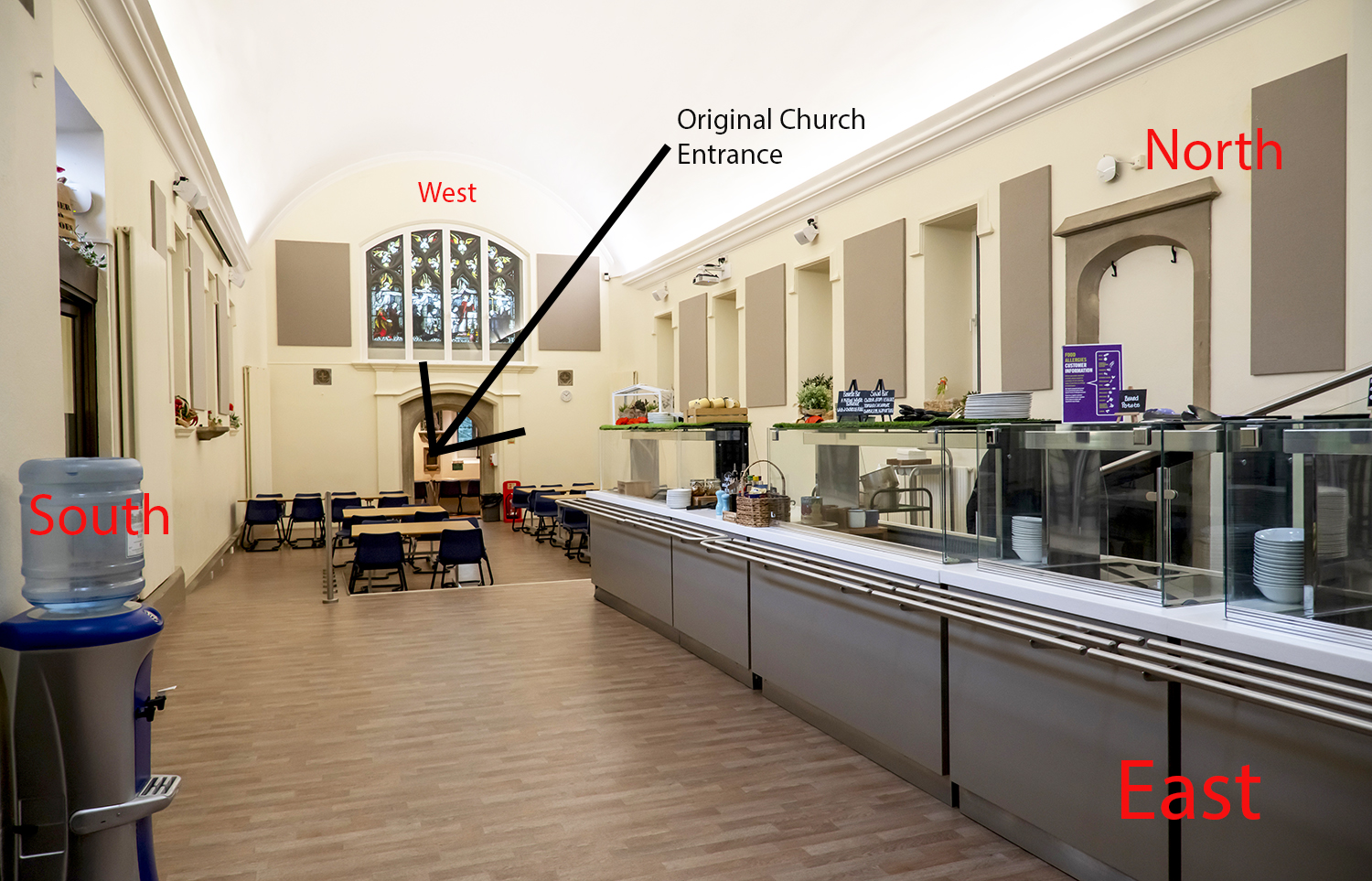
Orientation of the old church
Today, as a dining hall, the building is back to front. As with most churches, the altar would have been at the east of the building (where you now enter the dining hall).
The old entrance would have been through the porch door at the west end of the church (see image 1). Once through the door you were then in the ‘Narthex’ (this is a covered porch in church architecture terms). On your left was a wall-mounted receptacle containing holy water for entrants to bless themselves. You would then turn right to look down the Nave and face the altar. Our tour of the stained glass starts here.
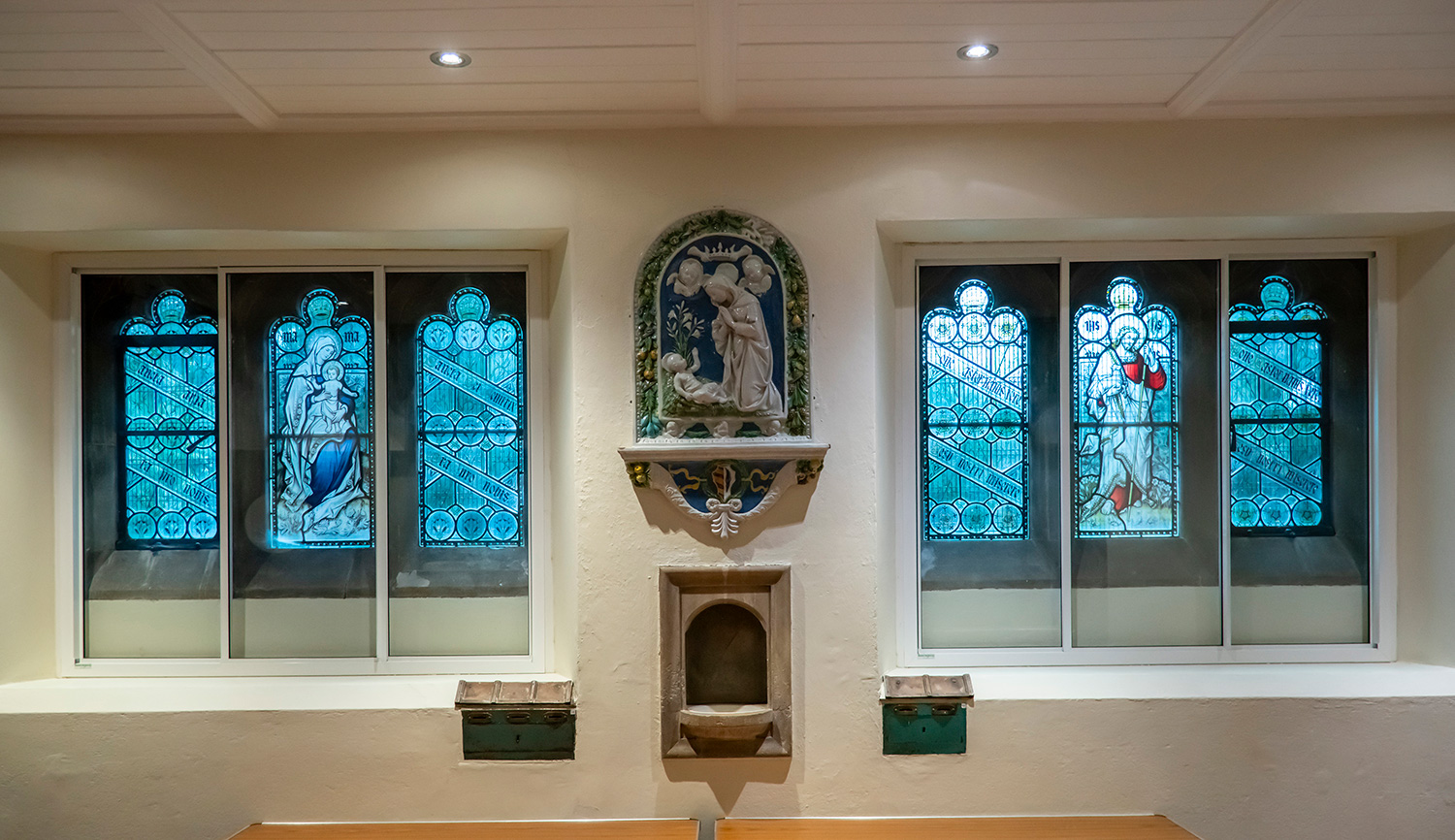
The Narthex
We’re starting the tour here, as if you were using the old west entrance, because the placement of church art wasn’t random. It was in certain positions for a reason. In the Narthex itself there are two windows separated by a colourful wall-sculpture (based on a piece by the Florentine ceramicists The Della Robia Brothers, and called the Virgin of the Lily). Below this is the receptacle for holy water. There are also wall-slots for donations, which suggests that any local Catholics were also welcome to join the priory’s services. There weren’t many catholic churches in the area back then.
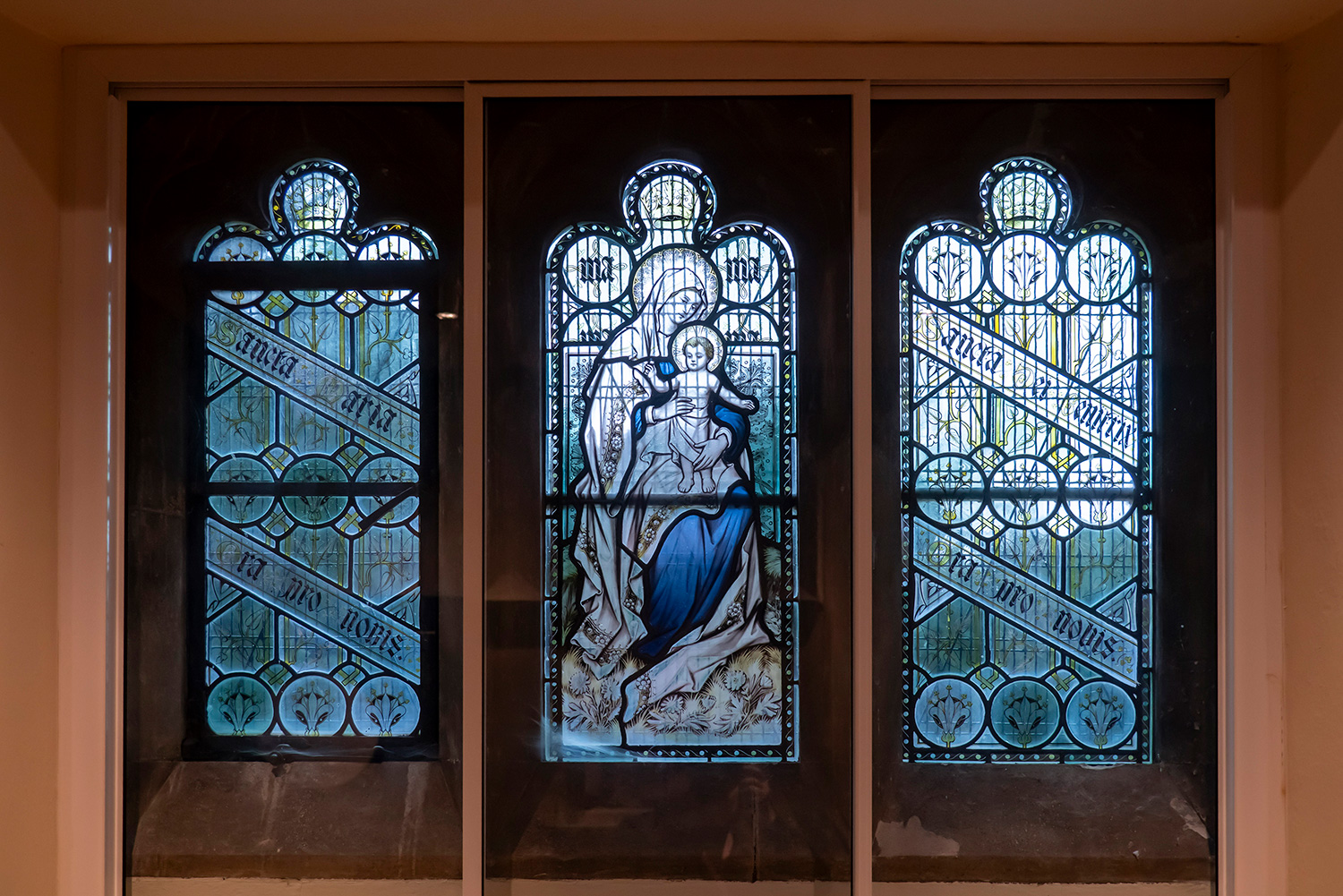
Narthex: The Virgin Mary
The first window in the Narthex is a depiction of the Virgin and Child in contrasting blues and yellows.
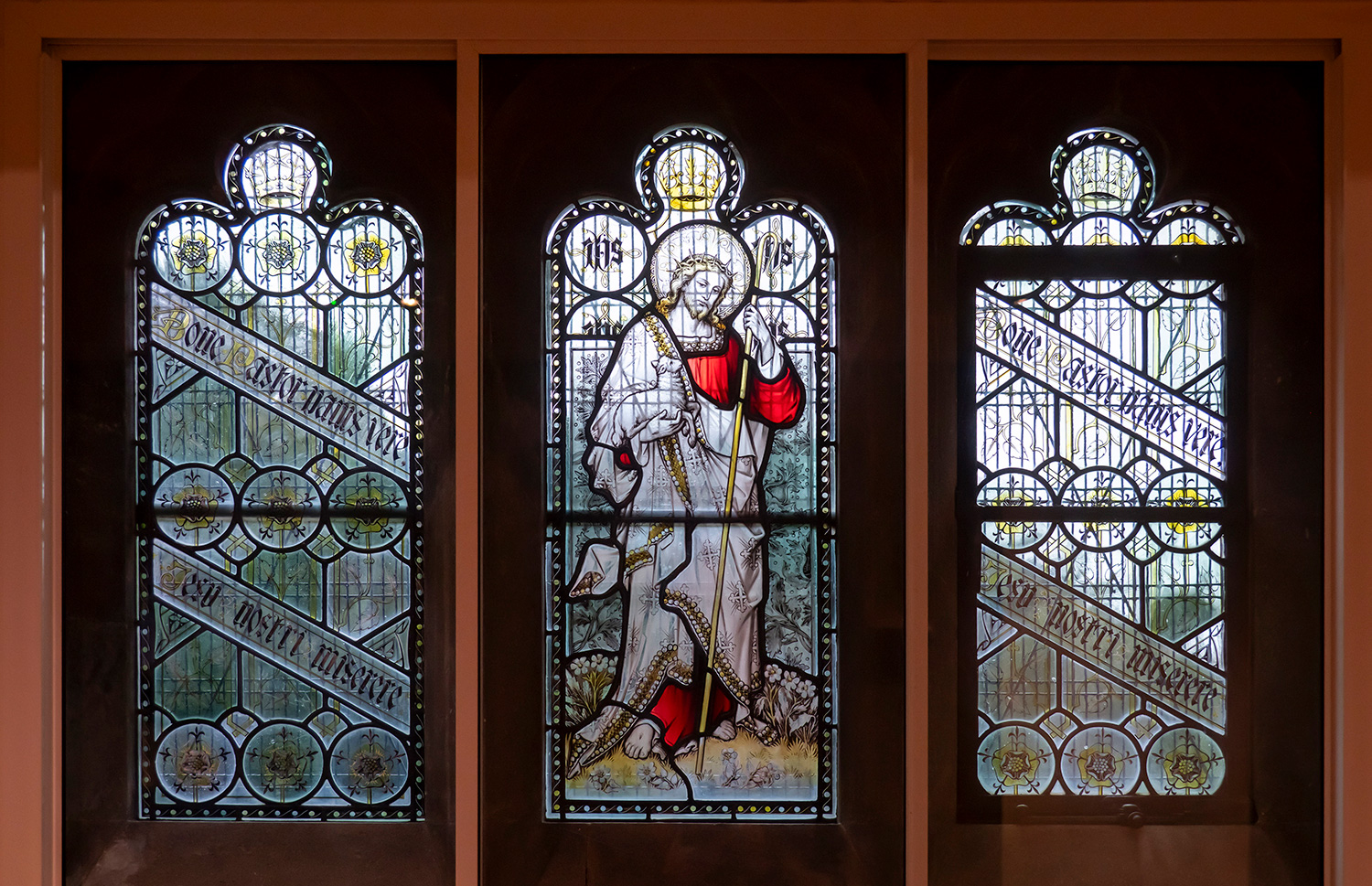
Narthex: Jesus depicted as The Good Shepherd
This second window in the Narthex is Jesus cradling a lamb, a popular depiction known as ‘The Good Shepherd’. This depiction was often used by early persecuted Christians in the subterranean caves of Rome. Fortunately, for them, it corresponded with a well-known depiction of the Roman god Hermes with a lamb. Thus they could ‘disguise’ their place of worship. The glass used is red with green and yellow, again nicely contrasting colours to make the figures stand out.
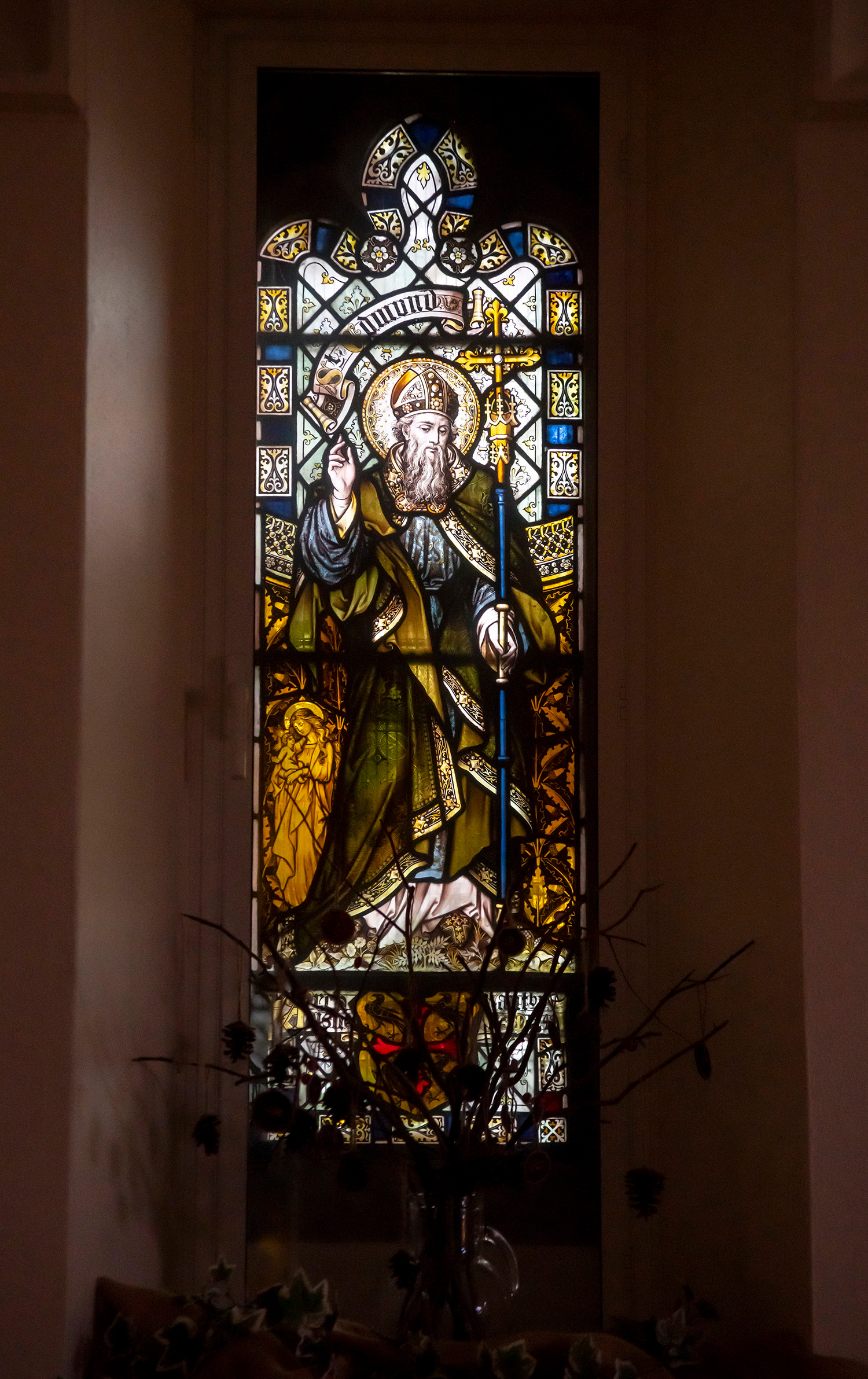
1st Left: St. Edmund of Abingdon
Next, we enter the church and walk down the Nave (the central aisle), facing what was the old altar but is now the main entrance to the dining hall.
The first window on the left is St. Edmund of Abingdon (died 1242 AD). Edmund was very much a ‘local’ saint being both born in Abingdon and in later life a lecturer in mathematics and theology at Oxford University (now remembered with St. Edmund’s Hall, Oxford).
He was a stickler for justice and good government, and this put him at odds with King Henry III.
He was possibly selected for the window because of his local connections and his defence of the Church against authority. This may have been particularly relevant in the late 1890s as the English Catholics were still on the comeback trail.
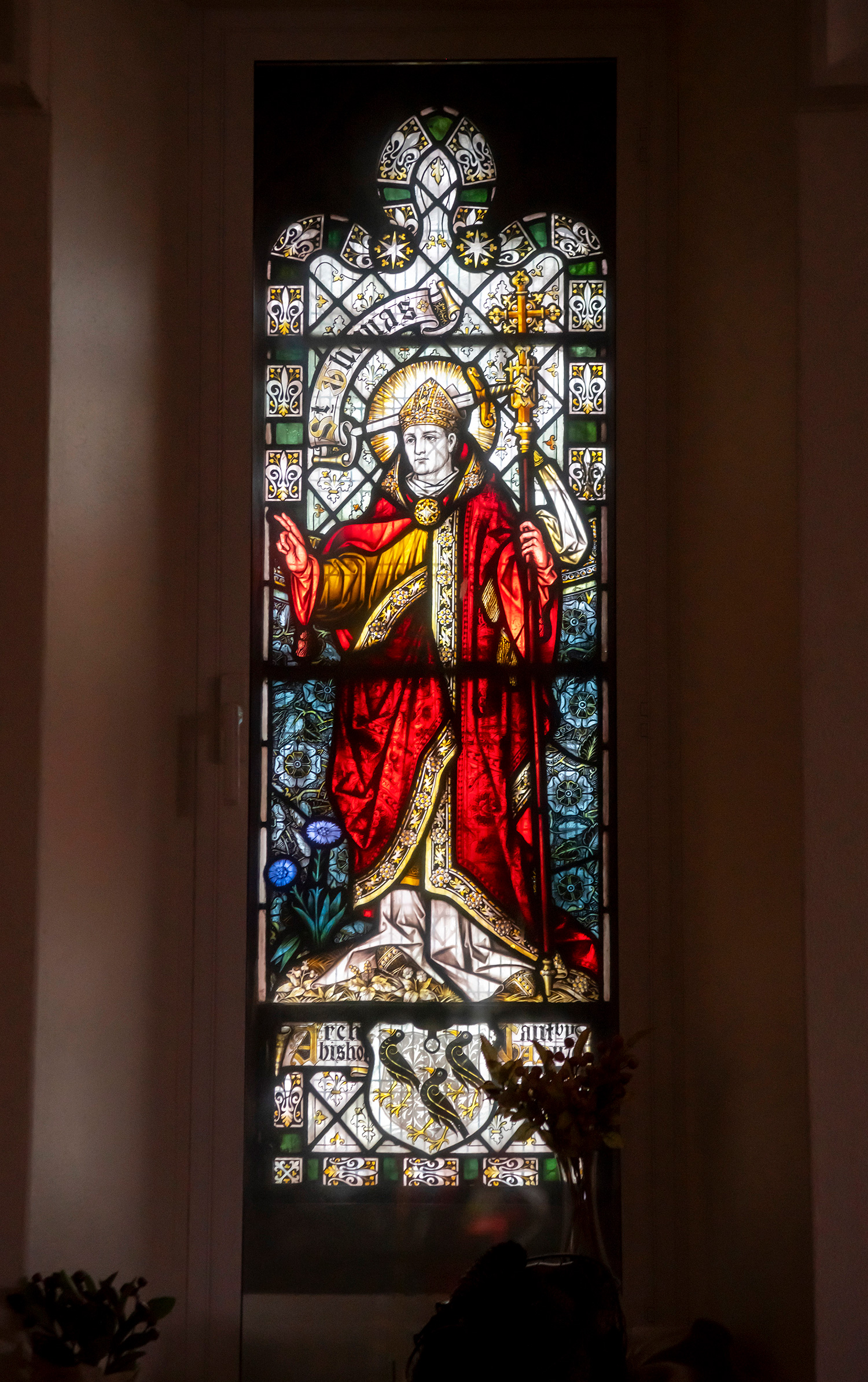
2nd Left: St. Thomas A Becket
Next, on the left is St. Thomas A Becket (died 1170 AD). Again, probably selected for his martyrdom in protecting the church against another king, this time Henry II.
The king allegedly said, “Will no one rid me of this turbulent priest?” upon which some of the king’s knights took it upon themselves to murder Thomas in Canterbury Cathedral. Thus making Thomas one of the English church’s most renowned martyrs and inspiring pilgrimages to Canterbury for centuries.
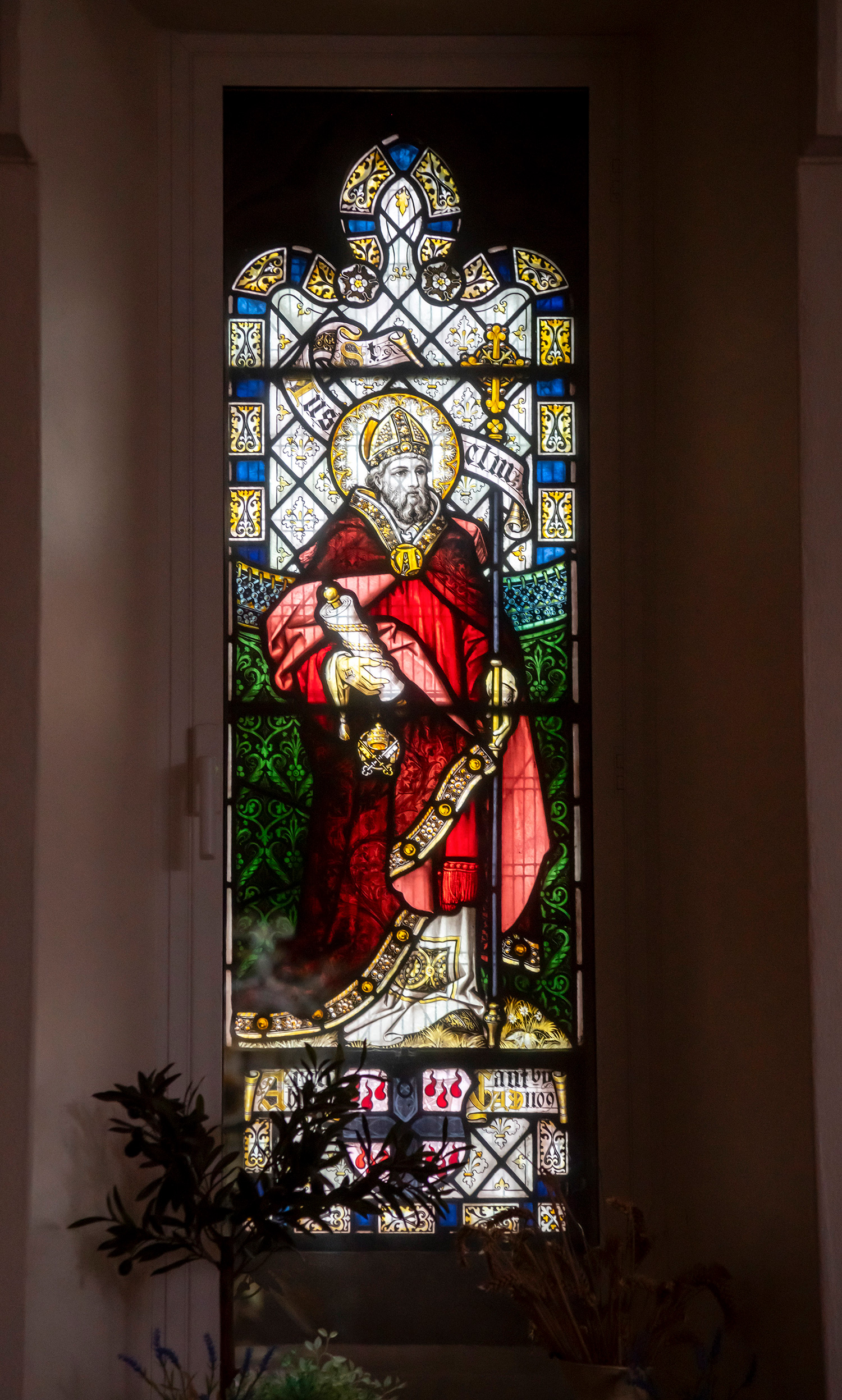
3rd Left: St. Anselm
Next, on the left is St. Anselm (died 1109 AD).
St. Anselm was another Archbishop that set himself against royalty. This time he was on the wrong side of two kings, William II and Henry I. The disagreements resulted in him being exiled twice.
The ivy in the glass shows him ‘clinging to the truth’.
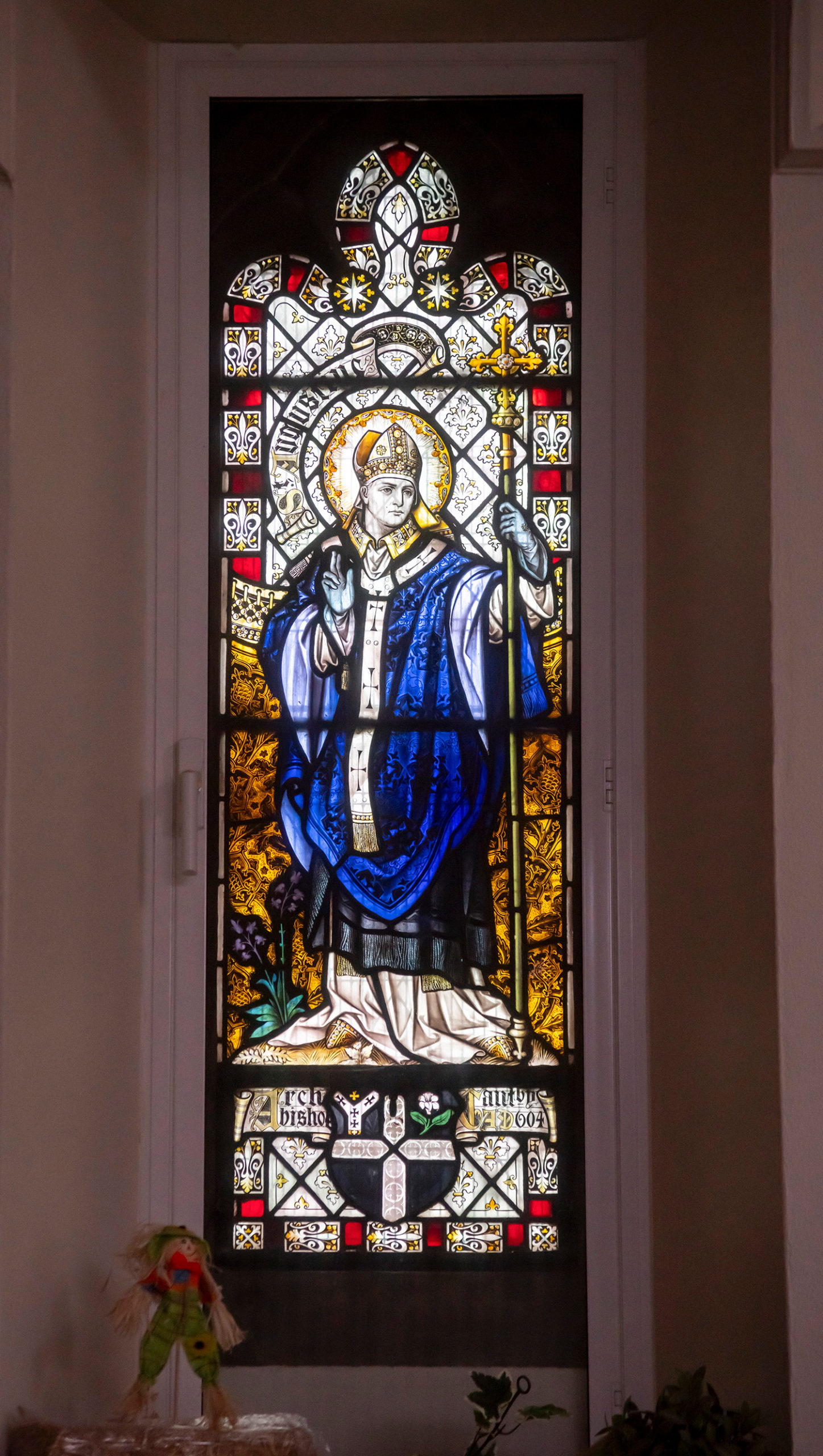
4th Left: St. Augustine of Canterbury
Next, on the left is St. Augustine (died 604 AD). St. Augustine effectively established the Church in the UK.
Britain had converted to Christianity under the Romans, but after the Romans departed in 410AD the remaining Christians were left isolated from Rome, and mostly under the influence of Irish monasteries.
The northern European Saxons took advantage of the Romans leaving and invaded and settled in Britain. They were not Christian, so Pope Gregory I sent Augustine to convert the Saxon Kingdom of Kent and its ruler, Aethelbehrt. Kent was closest to the English Channel so a good place to start.
Augustine converted Aethelbehrt and he was then allowed to found a monastery in Canterbury. Thus, Augustine became the first Archbishop of Canterbury. The blues in the stained glass are meant to symbolise the seas that were crossed to achieve his mission.
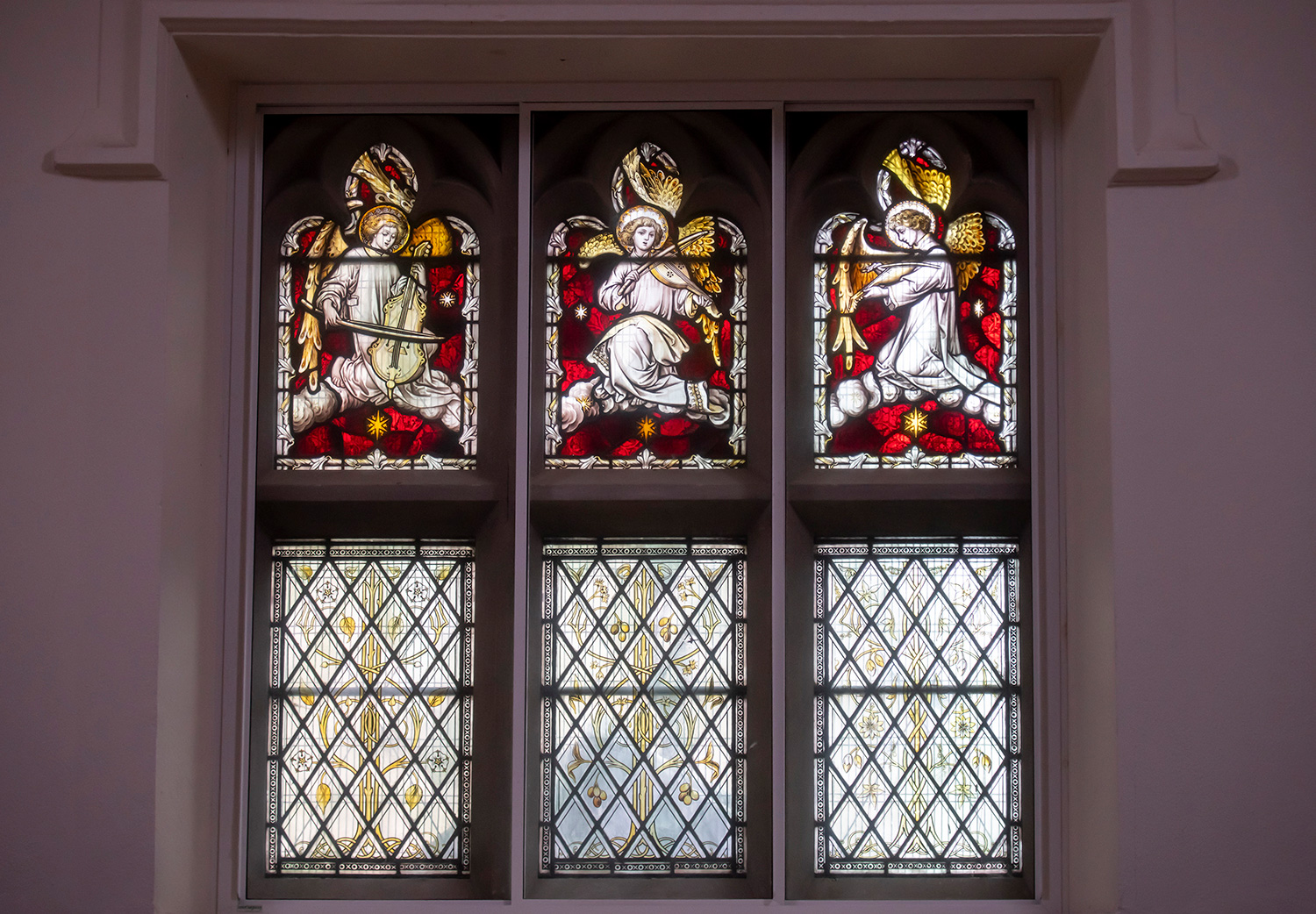
East Wall (the modern entrance to the dining hall): Minstrel Angels
On the East wall are three angels playing stringed instruments with bows, like violins or cellos. The reason for the relatively plain windows underneath is that this composition originally framed a statue of Mary called ‘Our Lady of Sorrows’. This depiction of Mary showed her grieving at the death of her son, usually with her heart pierced by a sword. The various stages of a flowering lily in the lower windows represented Mary’s joy at the resurrection. Thus, it is likely that this window was created specifically for an existing statue that was brought to the new priory.
Here we turn around to walk back down the dining hall…
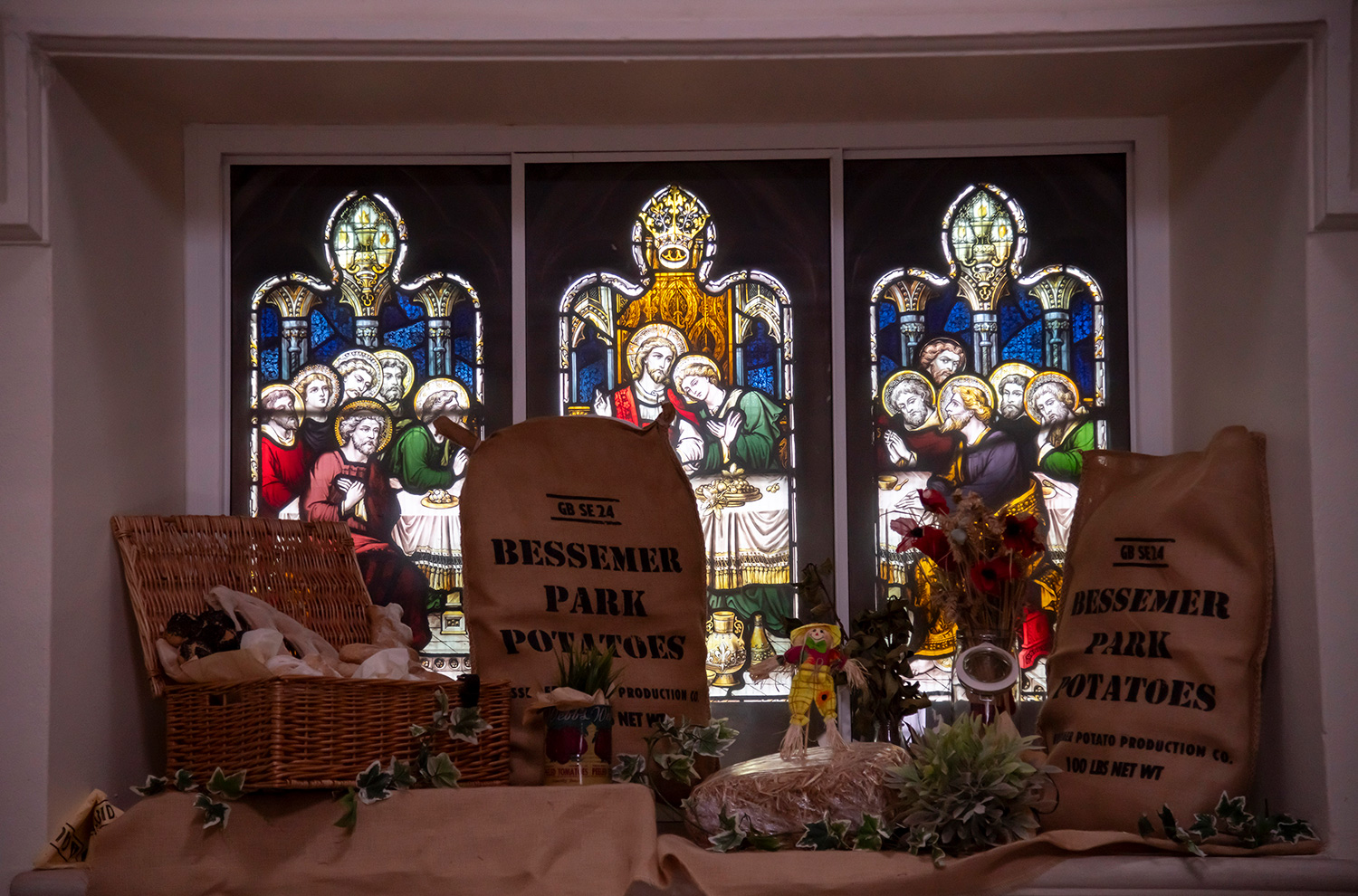
1st Left: The Last Supper
The large window represents The Last Supper, the final meal that Jesus had with his twelve disciples. It is during the last supper that Jesus reveals that one of the disciples will betray him. I think we can deduce that Judas is the shifty looking figure, making a hasty exit, at the back of the third panel. Leonardo da Vinci’s famous ‘The Last Supper’ was painted in the dining hall of the monastery of Santa Maria delle Grazie in Milan, so it is rather apt that our Last Supper is now in a dining hall too.
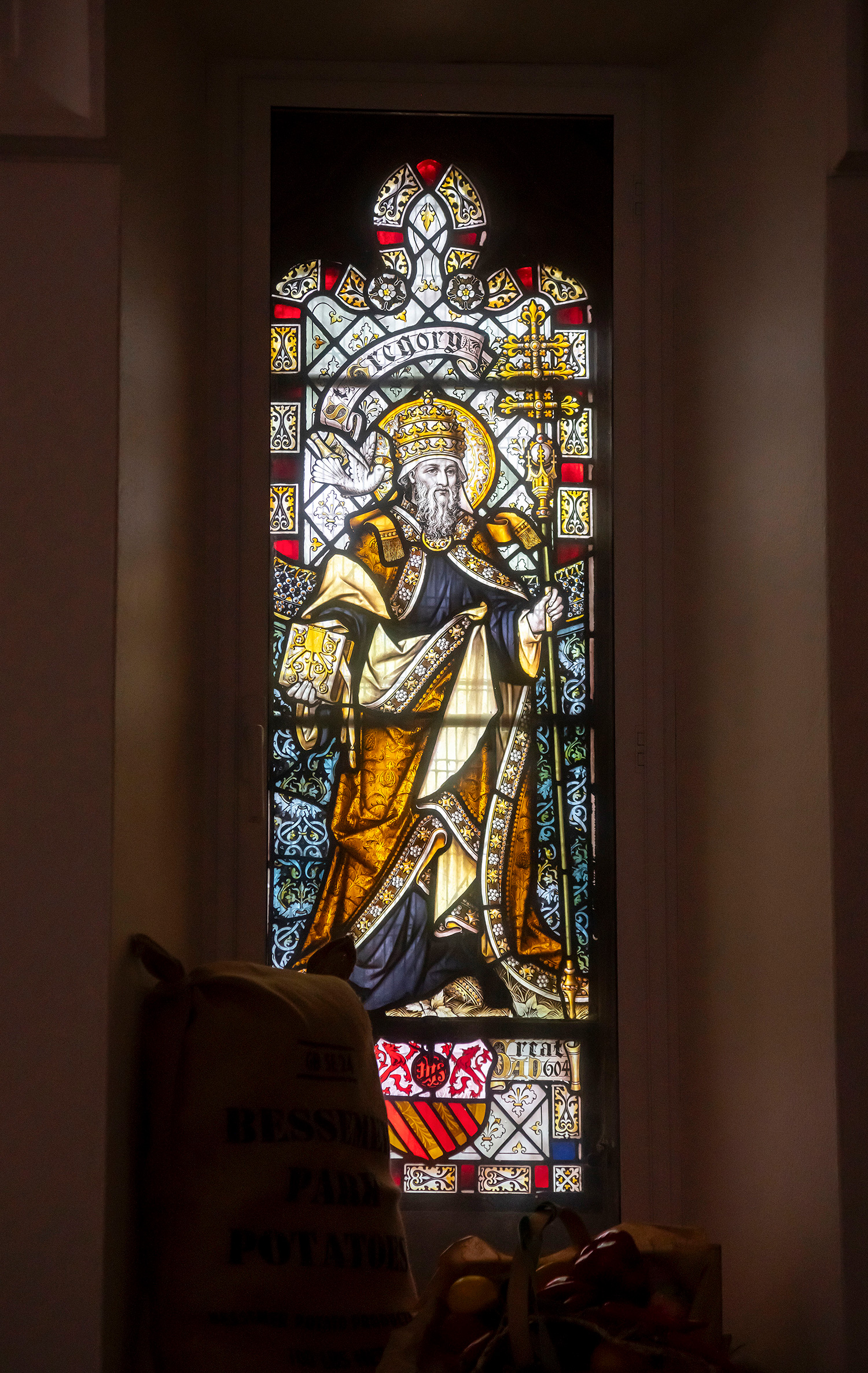
2nd Left: St. Gregory the Great
This window represents Pope Gregory I (died 604 AD) who became St. Gregory the Great. It was he who sent St. Augustine (on the opposite wall) on the mission to establish the Church in England.
He is shown with a dove, this being his attribute. Most saints have an ‘attribute’, an object that makes them recognisable. For instance, St. Peter is often shown with keys (these being the keys to heaven).
Most of our windows have the saint’s name incorporated into the glass but attributes helped early Christians recognise depictions of the saints more easily. This was especially important when a lot of the poor population were illiterate, and they needed some visual clues.
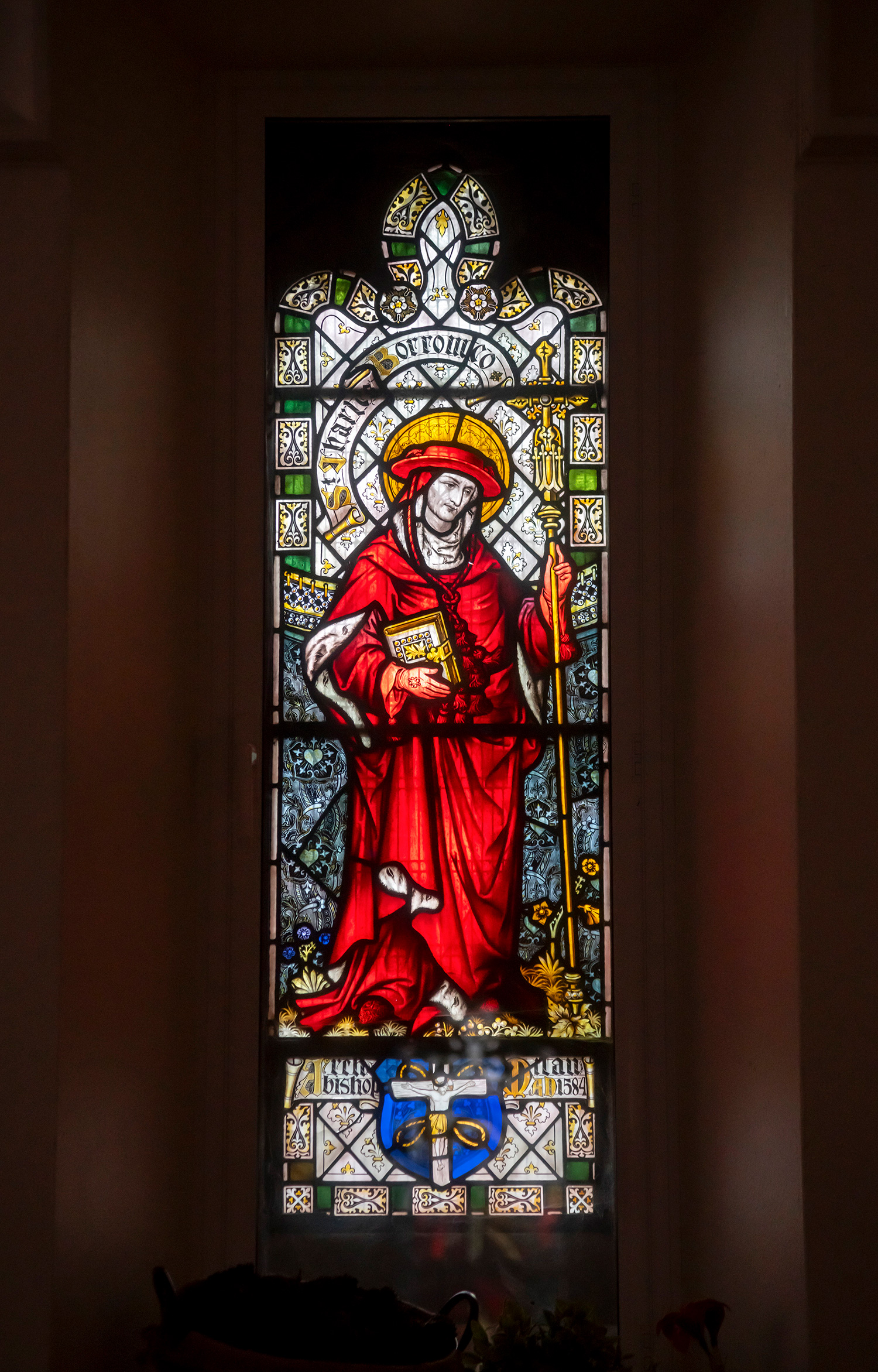
3rd Left: St. Charles Borromeo
The window shows St. Charles Borromeo, Cardinal Archbishop of Milan (died 1584). He was a notable figure in the counter-reformation, the Catholic Church’s response to the rise of the Protestantism in England (e.g. Henry VIII dissolving the monasteries) and in other European countries, such as Germany and The Netherlands.
St. Charles is also remembered for giving sanctuary in Italy to Catholics that fled England under the persecutions of Elizabeth I.
He was also the patron saint of John Robertson, the man that donated Begbroke House to the Servite Order. By making this gift he gave ‘sanctuary’ to the Servites, which is maybe where the parallel with St. Charles Borromeo came in.
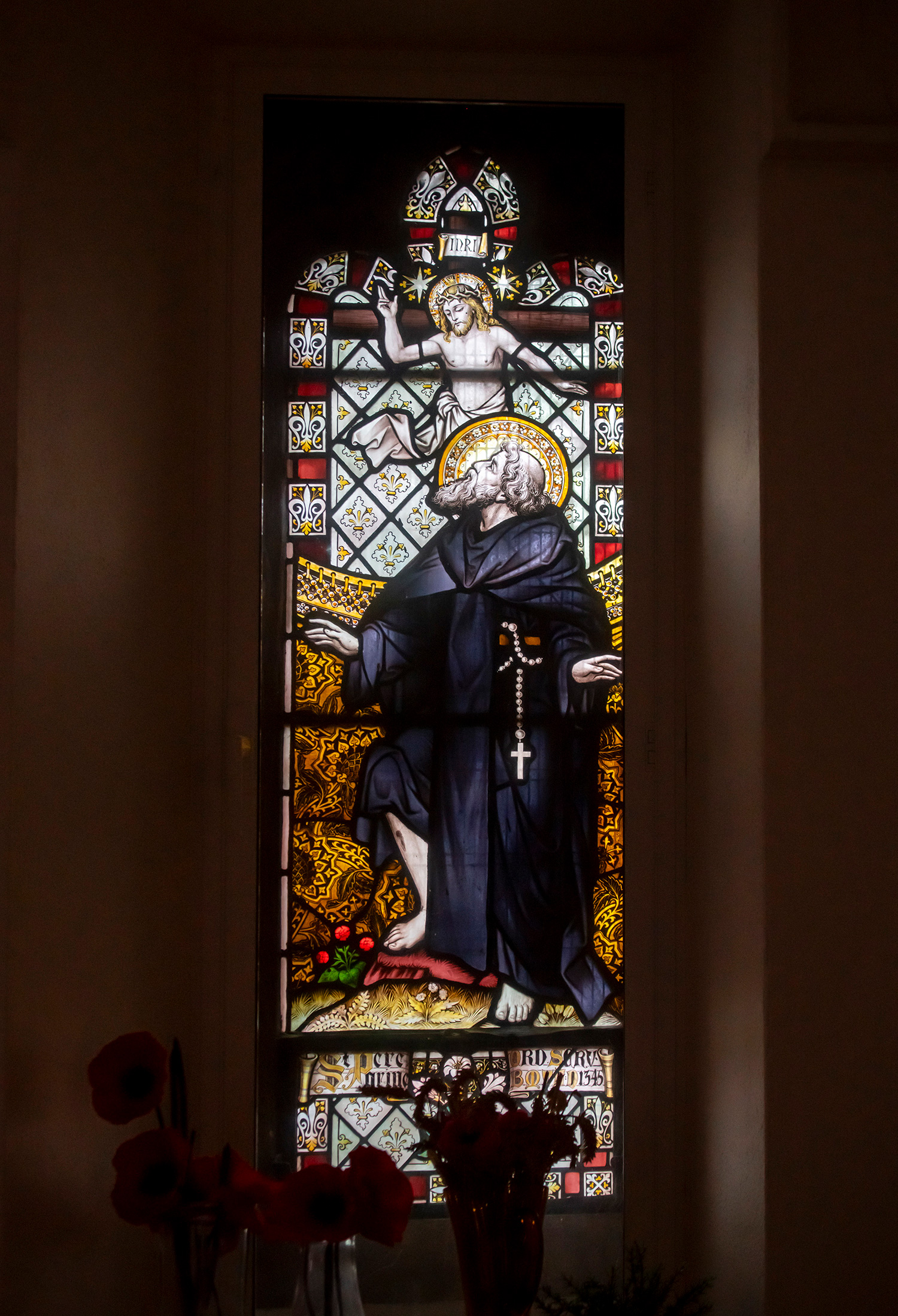
4th Left: St. Peregrine Laziosi
This window shows St. Peregrine Laziosi (died 1345). He was a member of the Servite Order, so perhaps a favourite of those in the priory. Initially he was an opponent of the Servites, publicly heckling and assaulting the man that had revived the order, Philip Benizi (see next window). Laziosi repented his actions and was then treated with kindness by Benizi.
Later in life, Laziosi suffered from cancer in his leg but just prior to its amputation he was miraculously cured. Thereafter he has been the patron saint of those with cancer. The modern medical explanation is that it may have been an exceptional instance where a bacterial infection destroyed the cancer cells.
You’ll notice in the image that he has a wound on his exposed leg.
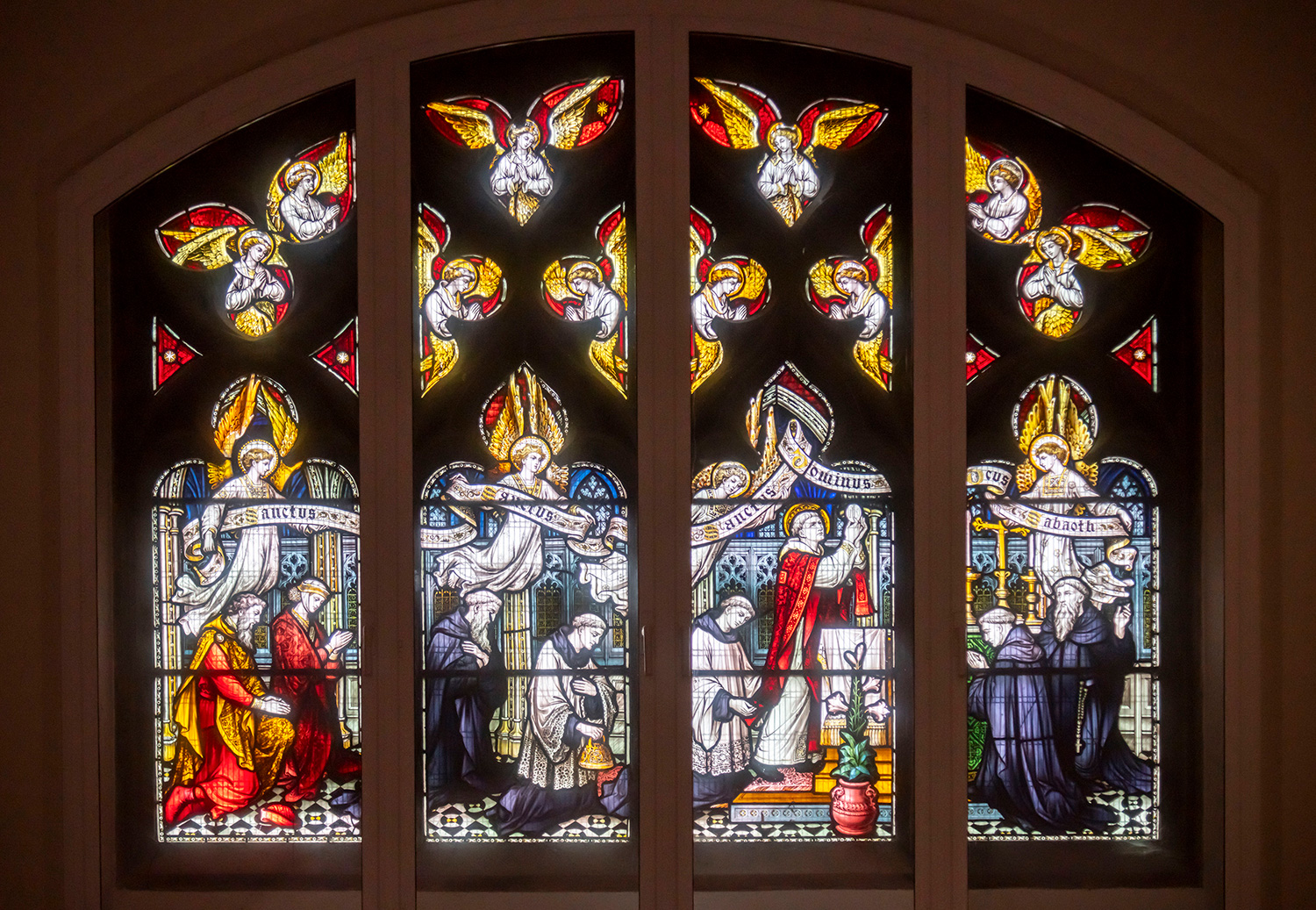
The West Wall: St. Philip Benizi
This is the only window that wasn’t the work of Hardman and Co. It shows St. Philip Benizi (the St. Philip that the church was named after) conducting the first Servite mass. You can see he’s holding a communion wafer. The window was designed by Father Joachim Maguire, a member of the Servite Order. In the far-left panel, the two kneeling figures are John Robertson and his wife who donated the buildings and estate to the Servite Order in 1897.
If you remember, the old entrance and exit was at this end of the dining hall. Thus this big window was the last thing that worshippers would see on leaving the church. The placement of a big ‘takeaway’ message on the west wall was typical of church architecture, so too was a reminder of who paid for it!
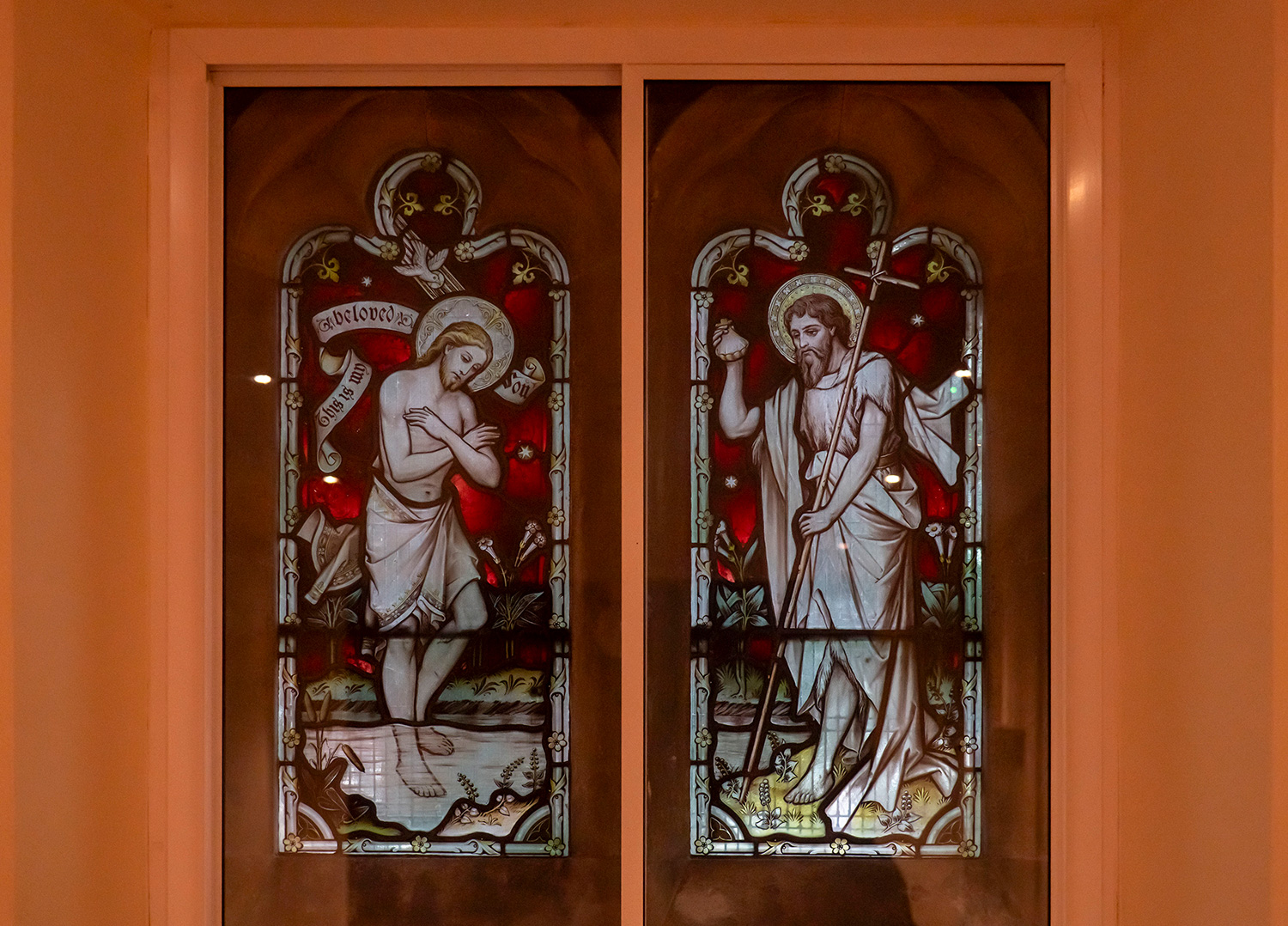
A Later Addition?
We are indebted to the unknown author of ‘Flower Festival at The Priory, Begbroke, 1996’ for some of the window research above. This was written whilst St Philip’s was still a functioning Servite church. For instance the author also describes statues that are no longer there. However, there is one extra window that the author doesn’t mention, so we can assume it wasn’t there in 1996 when the author wrote the piece.
In 1999 the Servites sold the site. It was bought by The Community of St. John the Baptist who were an episcopal (protestant) order of nuns.
Unsurprisingly, this latecomer to the church’s artworks depicts St. John the Baptist (on the right) baptising Jesus (on the left).